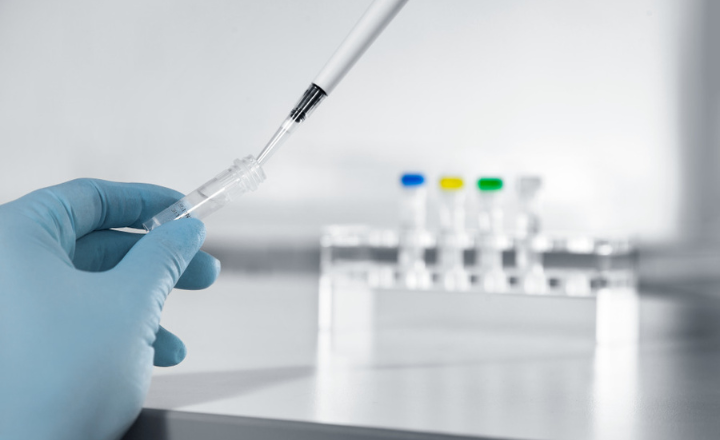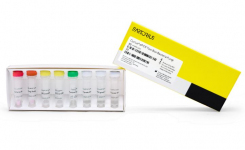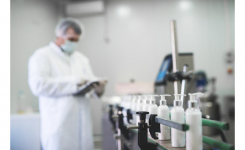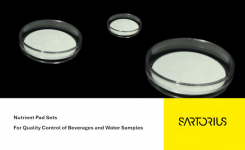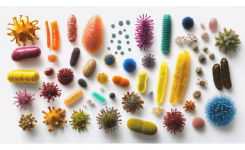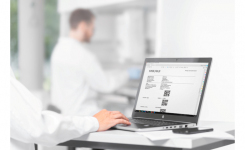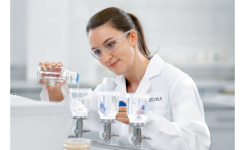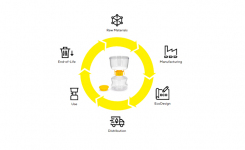Viscosity refers to a liquid's resistance to flow and has an impact on the accuracy of bioburden testing of non-sterile products; not only will it affect the ability of microorganisms to move freely within the liquid, but it will also make analysis using membrane filtration near impossible due to poor filterability of the sample.
Typical non-sterile viscous liquids that require bioburden testing as prescribed by USP <61>, Ph. Eur. 2.6.12., or JP 4.05 include products such as oily solutions, ointments, lotions, and creams.
To ensure accurate, pharmacopeial-compliant microbiological analysis, it is essential to consider the viscosity of a test sample and adjust the protocol accordingly. This may involve either raising the product's temperature or diluting the sample in a suitable diluent so that it can pass through the membrane filter.
Here we ask Nils Jäger, Application Scientist, Sartorius Lab Instruments, and Juliane Großmann, Product Manager, Sartorius Lab Instruments, to share their in-depth knowledge and experience of difficult applications and we discover how best to achieve accurate microbiological results for viscous liquids.
Q: How does a lab determine that a liquid is so viscous it will need a special approach?
A: Especially in the field of membrane filtration, the viscosity of a sample becomes apparent very quickly. The filtration time for even small volumes increases considerably, and the process can seem to take forever to complete. Samples with high viscosity place severe stress on both consumables and hardware, such as the membrane filter and the vacuum pump. Laboratories with experience might have previously encountered samples with high viscosity and developed pharmacopeia-compliant procedures for handling them during membrane filtration. They might use this experience to determine when a special approach is needed.
Q: When working within pharmacopeial guidelines, what options are available and how does a lab decide which approach is best?
A: First, it is necessary to distinguish whether the viscous product will be microbiologically tested for sterility or if the microbial enumeration test is to be applied. The Microsart® product line is specifically developed for detecting and enumerating microorganisms in non-sterile products by membrane filtration. The relevant pharmacopeias for microbiological examination of non-sterile products, such as USP <61>, Ph. Eur. 2.6.12., or JP 4.05, provide general guidelines for handling viscous samples. The filter material needs to be selected in such a way that bacterial retention efficiency is not affected by the components of the sample, and the nominal pore size of the membrane filter should not exceed 0.45 µm. However, the choice of diluents is limited.
For the filtration of viscous oils, the various pharmacopeias advise dilution of the sample in a sterile diluent that has been demonstrated not to have antimicrobial properties under the test conditions. Isopropyl myristate (IPM) is the pharmacopeia-recommended agent of choice in this case.
Additionally, non-inhibitory sterile surface-active reagents such as polysorbate 80 can be employed as diluents. After filtration of the sample, it is essential to wash possible remnants out of the membrane, which might influence the growth of microorganisms.
An additional method to reduce the viscosity of samples is to raise the temperature to 40 °C or, in exceptional cases, to a maximum of 45 °C. However, there are exceptions for other types of samples, where heating leads to gelation. An example is hydroxypropyl methylcellulose, which is a component of ophthalmic drugs. In these cases, dilution and lowering of the temperature might help increase filterability.
Q: Sartorius offers the Microsart® filter product range. Which features and benefits make this a good solution for viscous liquids?
A: The Sartorius Microsart® @filter is a sterile ready-to-use filtration unit that minimizes the risk of secondary contamination, as it comes preassembled with a sterile filter base, filter and a 100 ml or a 250 ml funnel. It is supplied with different membrane filters made of either cellulose nitrate (CN), polycarbonate (PC), regenerated cellulose (RC), or polyvinylidene fluoride (PVDF). This range of membrane filter types covers various applications, e.g. Cellulose nitrate (CN) filters are used for the filtration of aqueous solutions, whereas PVDF membrane filters are used for filtration of non-aqueous or aggressive solutions. The funnel and base material also exhibit excellent chemical resistance for most relevant applications. However, individual chemical compatibility needs to be addressed. For this purpose, Sartorius offers compatibility charts for each component.
Besides this, the equipment needs to be checked regarding chemical compatibility. The Microsart® Manifold from Sartorius is made of high-quality stainless-steel material and is chemically compatible with most critical substances.
Q: Can you share an example of how using the Microsart® system has helped a lab overcome issues with the filtration of viscous samples?
A: We recently received a request from a customer who faced this problem when their existing supplier of filtration units launched a new product that was no longer chemically compatible with isopropyl myristate (IPM), which the lab had been using for the dilution of their viscous products. The plastic material of the funnel had changed and this caused significant problems for the customer as they had to find an alternative solution because his old filtration unit was no longer available.
Fortunately, we could help by suggesting our Microsart® @filter PVDF version. The filtration time decreased and the plastic material of the funnel was chemical resistant against the IPM.
Q: What factors should a lab consider when preparing a proposal to adopt the Microsart® filtration system? Why might they switch from their existing filtration system?
A: As mentioned before, each sample places distinct demands on each component of the system. For instance, verifying the chemical compatibility of the materials that come into contact with the filtered sample is essential. Additionally, selecting the appropriate membrane filter should be based on the sample's characteristics. For this purpose, referring to the chemical compatibility or product data sheets of our Microsart® product line is advisable, or directly reaching out to one of our application specialists. Sartorius brings more than 60 years of worldwide experience in membrane technology to each application.
If you require assistance finding the optimal solution for your application, we recommend contacting us using the green "Request Information" button below.
Learn more about the Filtration of Viscous Samples for Microbiological Quality Control here.
About the Interviewees









